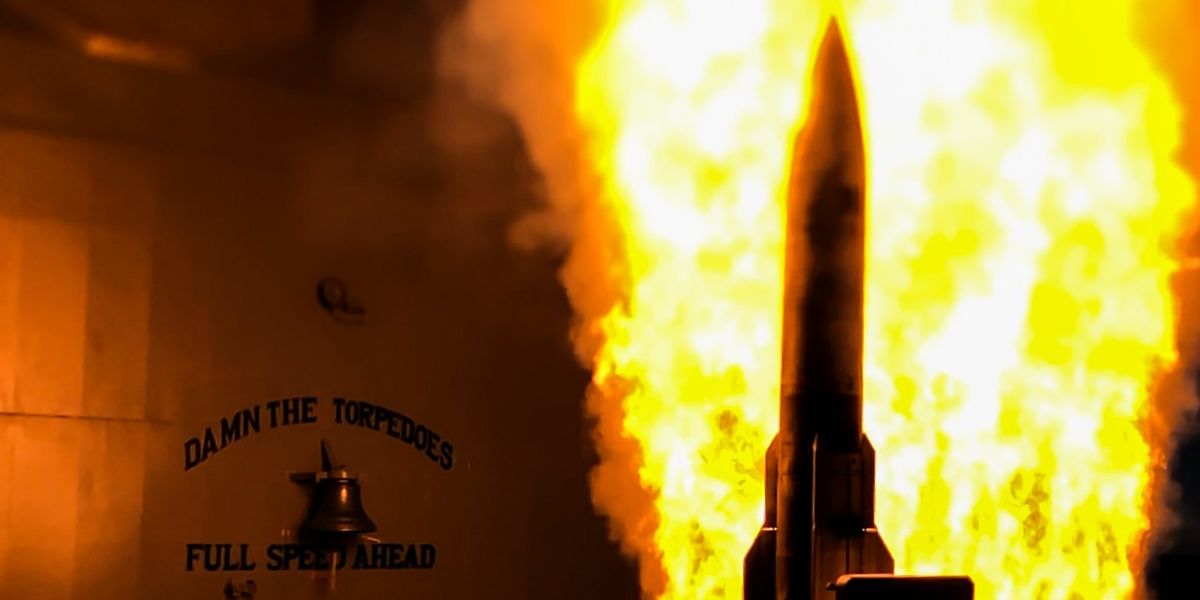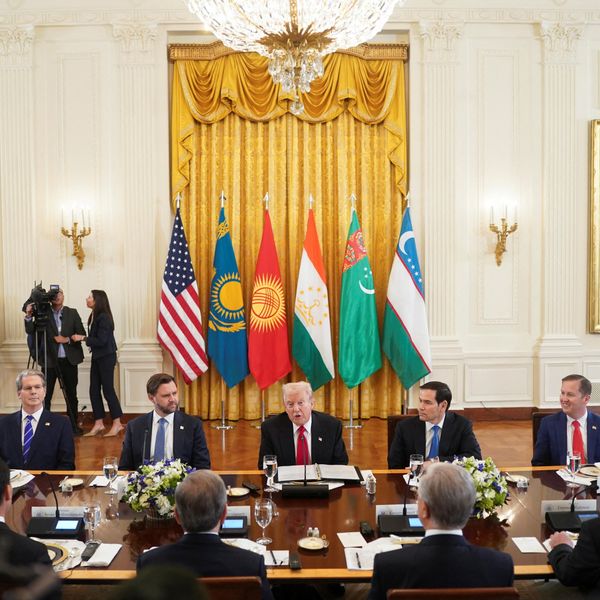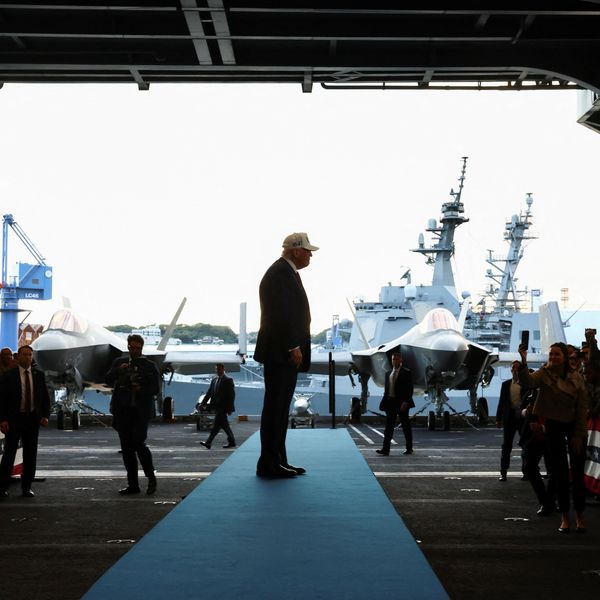Since the United States government decided it had an obligation to protect global shipping from Houthi attacks in the Red Sea over 7,000 miles away from its borders, it has spent well over $1 billion in missile defense and dropping bombs on the militants’ assets in Yemen.
Whether one agrees that it is a sound strategy or not — this has gone on for 11 months with no end in sight — it is worth examining the cost to U.S. taxpayers. And looking at the cost per missile, we can safely say the U.S. taxpayer is getting rooked.
Paying too much
The extravagant premium U.S. citizens are paying for missiles is part of a decades-long trend that sees taxpayers getting less bang for their buck with the passage of each new defense budget. In very sharp contrast, over the last 40 years consumers have seen their dollars buy vastly more technological capability for less money.
This makes total sense as consumers are benefiting from what is largely a market-based economy that has driven huge reductions in the cost of technology, even as that technology has advanced by leaps and bounds.
More specifically, the last 40 years have seen the cost for computer memory and processors drop by thousands percent-wise, while advances in automation and robotics have greatly reduced the cost of manufacturing. What’s more, composites, another major player in advancing both consumer and military technology, are one-third the price they were 20 years ago.
Indeed, the evolution we have seen in mobile phone technology in terms of what consumers get on a bang-for-the-buck basis is truly remarkable with prices for a basic mobile phone in the 1980s costing 10 ten times or more than what they pay today for a mid-range smartphone with orders of magnitude more in capability.
Hence, it is irrefutable that consumers have benefited greatly from market-driven technological innovation and cost reduction. Sadly, we cannot say the same of the defense sector.
Unlike the open market, the defense industry is largely defined by a small number of contractors servicing a single customer: the DOD. And because of the undue influence these companies have over senior Pentagon officials and Congress, the suppliers effectively control their customer.
Bottom line: much higher prices, less bang for the buck.
Let's talk about missiles
Nowhere is this more evident than in missile manufacturing. Israel’s much-vaunted Iron Dome Air Defense Systems has been adapted for use on ships; this adaptation, called C-Dome, provides Israeli ships with the capability to destroy drones and missiles with radar-guided precision guided missiles costing just $40,000 to $50,000 each. That’s right, you heard correctly — $50,000 each!
By comparison, the cheapest missile that U.S. destroyers deployed in the Red Sea use to destroy Houthi-launched drones (which cost between $2,000 and $20,000) is a RIM-116 SeaRAM missile costing over $900,000 per missile, about 18 times more expensive than the C-Dome missile.
But the story doesn’t end there. The C-Dome missile, the Tamir interceptor, has roughly the same sized warhead (11 kg) as the RIM-116 (11.3 kg). So, in size and purpose, they are roughly comparable. Yet, while the radar-guided Tamir has a range of about 43 miles, the RIM-116’s range is just 5.6 miles. Consequently, if a 9,500-ton, $2 billion-plus Arleigh Burke destroyer operating in the Red Sea is attempting to defend a civilian merchant ship 10 miles away that is under attack by a cheap $5,000 drone, it will not be able to use the short range RIM 116; instead, it will be forced to use a RIM-162 Block II or an SM-2 missile, costing $1.5 million and $2.5 million each, respectively.
In other words, an Israeli vessel such as the armed-to-the-teeth, 2,000-ton Sa’ar 6 Corvette, will have the option to employ a highly effective air-defense missile that is well over $1 million less expensive than the RIM-162 and over $2 million less than the SM-2.
Given the difference in range and size, one would expect a SM-2 to be much more expensive than a Tamir, but should it really be fifty times as expensive? The answer is a resounding “no.”
It is also worth noting our Arleigh Burke destroyers deployed in the Red Sea have been using even more expensive $4.3 million dollar SM-6 missiles to shoot down cheap Houthis missiles and drones.
Clearly, we cannot afford such a disparity.
Even if U.S. taxpayers could get a missile like the Tamir for $50,000, it’s still too much, considering that the Tamir missile weighs in at under 200 pounds, and that the processing power it contains is almost certainly less than that of a modern smartphone and is certainly a tiny fraction of what is incorporated into a self-driving Tesla.
Furthermore, the hours of labor required to assemble a 200 pound missile is likely a very small fraction compared to the time spent to assemble a $50,000, 4300-pound. automobile. And if produced in quantity, the missile body and moving parts should certainly be under $10,000. This brings an estimated cost well under $50,000.
The unjustified cost of these missiles is actually a threat to U.S. security as the number we will need in any major conflict against a major opponent will cost many tens of billions of dollars, making it more difficult to afford the weapons we truly need to protect our national interests.
Further, one would have to be very naïve to believe that such ridiculous pricing is confined to missiles. Since its inception the F-35 program cost has grown by 400 percent, going from $338 billion in 2007 ($508 billion in 2024 dollars) to over $2 trillion according to the latest GAO report.
Further, the Zumwalt Cruiser, of which there were supposed to be 32 initially, blew up in price from $1.34 billion to well over $9 billion per ship in 2024 dollars. And that cost is still increasing as the Navy pumps hundreds of millions more into the ships to try to make them militarily relevant. What’s more, upgrades for existing nuclear bombs are coming in at $20 million each — many millions more per bomb than seems reasonable.
Ultimately, with defense budgets driving the United States deeper into debt, reversing the decline in U.S. military capability cannot be accomplished by spending more. It can only be accomplished by rejecting the status quo and pushing back on weapon system pricing that ignores the reality that technology and the cost of manufacturing has come down in price dramatically over the last 40 years.
Until then, don’t be surprised if we run out of missiles or money — or both — fighting foes such as the Houthis who are using cheap cost-effective weapons in the Red Sea to bleed American taxpayers dry and drive the United States deeper into debt.
- Firing nuclear missiles from the pork barrel ›
- The cost of US fighting Houthis in the Red Sea just went up ›
















